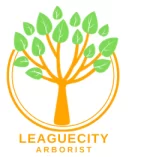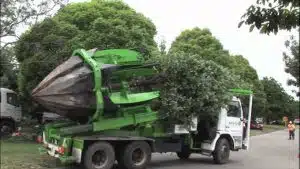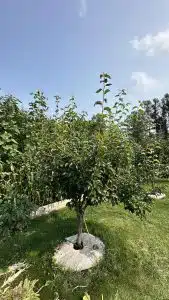Welcome to Piney Woods, a huge forested region in East Texas that extends into parts of Louisiana. Understanding the location and significance of Piney Woods is critical to League City arborists’ work. This guide seeks to solve Piney Woods’ mysteries, providing insights into its geographical range, distinctive traits, and ecological significance. Piney Woods is more than simply a collection of trees; it is a thriving ecosystem overflowing with various flora and wildlife. From towering pines to fragile wildflowers, each component is essential to maintaining the forest’s delicate equilibrium. As we trek through Piney Woods, we will discover its mysteries, marvel at its delights, and get a deeper respect for its natural beauty. Join us as we explore the lovely world of Piney Woods and uncover its hidden treasures.
Where is Piney Woods Located?
What Defines Piney Woods?
Piney Woods is distinguished by dense groves of pine trees, primarily loblolly, shortleaf, and longleaf pine, intermingled with hardwoods like oak, hickory, and sweet gum. These towering trees form a lush canopy, providing shelter for a wide variety of species. The region is also noted for its diverse biodiversity, which includes many plant and animal species found nowhere else. Furthermore, Piney Woods has a humid subtropical climate, with hot, humid summers and moderate winters that promote the establishment of a diverse range of vegetation. Together, these distinguishing characteristics lead to Piney Woods’ distinct identity as an important natural habitat in East Texas.
The Geographical Extent of Piney Woods
Piney Woods covers around 50,000 square miles and includes areas of East Texas, western Louisiana, southeastern Oklahoma, and southern Arkansas. Piney Woods encompasses a large region of eastern Texas, including locations near Houston, Dallas, and Tyler. The region’s gently rolling terrain is dotted with various rivers, creeks, and lakes. Piney Woods is well-known for its dense forests, which are mostly made up of pine and hardwood trees, contributing to the region’s distinct topography and biological value. This enormous swath of forested land provides a shelter for species and is critical to the region’s environmental health.
Climate and Terrain of Piney Woods
Piney Woods has a humid subtropical climate distinguished by hot, humid summers and moderate winters. Summers are usually lengthy and hot, with temperatures frequently exceeding 90°F (32°C), although winters are generally mild, with average temperatures ranging from 40°F to 60°F (4°C to 15°C). Precipitation is plentiful throughout the year, with the most rain falling in the spring and early summer. The landscape in Piney Woods is varied, ranging from flat, low-lying sections to gently sloping hills. Numerous rivers run through the region, including the Sabine, Neches, and Trinity, providing critical water sources and contributing to the area’s excellent soils. Piney Woods is also home to various lakes and reservoirs, including Lake Sam Rayburn and Toledo Bend Reservoir, which provide recreational possibilities and support a variety of ecosystems. Overall, the temperature and geography of Piney Woods form a dynamic and ecologically diverse habitat.
Exploring Piney Woods’ Flora and Fauna
Piney Woods has an incredible diversity of flora and animals, making it a refuge for both nature and wildlife aficionados. The forest is dominated by several pine species, including loblolly pine, shortleaf pine, and longleaf pine, which serve as the ecosystem’s backbone. In addition to pines, Piney Woods is home to a variety of hardwood trees, including oak, hickory, sweetgum, and magnolia. The abundant foliage supports a diverse range of wildlife, including white-tailed deer, eastern grey squirrels, foxes, bobcats, and a variety of bird species such as woodpeckers, owls, and songbirds. Piney Woods also hosts a rich community of reptiles, amphibians, and insects, which contributes to the overall biodiversity. Exploring Piney Woods provides a unique opportunity to observe the intricate web of life that flourishes in this magnificent forested area
Topography and Characteristics of Piney Woods
Piney Woods is distinguished by its gently rolling topography dotted with rivers, creeks, and lakes. The region’s topography is heavily influenced by its geological past, which includes significant layers of sedimentary rocks beneath the terrain. This results in a largely level terrain with occasional hills and ridges.
The forest is predominantly made up of pine trees, specifically loblolly, shortleaf, and longleaf pine, as well as hardwood species like oak, hickory, and sweetgum. The dense canopy generated by these trees produces a sheltered habitat with little undergrowth, allowing sunlight to penetrate to the forest floor. This distinguishing feature of Piney Woods adds to its specific ecological identity and provides habitat for a wide range of plant and animal species. Overall, the topography and qualities of Piney Woods make it an intriguing and ecologically significant place to visit.
Common Vegetation of Piney Woods
Piney Woods is known for its lush and diversified vegetation, which includes a wide range of plant species adapted to the region’s climate and soil conditions. The primary vegetation is made up of several species of pine trees, including loblolly pine, shortleaf pine, longleaf pine, and slash pine. These towering conifers comprise the forest’s backbone, providing habitat and food for a diverse range of animal species. In addition to pines, Piney Woods has an understory of hardwood trees such as oak, hickory, sweetgum, and magnolia. These hardwoods contribute to the overall richness of the forest and provide critical resources for wildlife. Throughout the forest floor, shrubs, vines, and wildflowers thrive in the dappled sunshine that filters through the canopy. Common understory plants include yaupon holly. Together, these many vegetation types provide a vibrant and dynamic ecosystem within Piney Woods, sustaining a varied range of plant and animal species.
Rare Plants & Habitats of Piney Woods
Several rare and distinctive plant species can be found in specialized habitats across the vast Piney Woods, adding to the region’s ecological richness. One such habitat is the longleaf pine savanna, which is made up of wide grassy areas with scattered longleaf pine trees. This ecosystem supports rare plants such as pitcher plants, sundew, and numerous orchid species that survive in damp, acidic soils. Texas trailing phlox, which is Deep sandy soils of long-leaf pine woodlands and White bladderpod, Natural openings of pine-oak woodlands.
Another notable habitat is bottomland hardwood forest, which can be found along the banks of rivers and streams. The American beech, water tupelo, and bald cypress dominate here, resulting in a rich and distinct habitat that supports a variety of uncommon plants, including the Louisiana quillwort and Texas wild rice. Protecting these unique flora and ecosystems is critical for Piney Woods’ biodiversity and ecological integrity, so that future generations can enjoy its natural delights.
Faqs
Which states does Piney Woods cover?
The Piney Woods are mostly located in East Texas but also extend into western Louisiana, southeastern Oklahoma, and southwestern Arkansas.
What are the key characteristics of Piney Woods?
Piney Woods is distinguished by dense forests of pine and hardwood trees, gently rolling terrain, and numerous rivers, creeks, and lakes.
What is the climate like in the Piney Woods?
Piney Woods experiences a humid subtropical climate with hot, humid summers and mild winters. Precipitation is plentiful throughout the year.
What kind of wildlife can be found in the Piney Woods?
Piney Woods is home to a wide variety of animals, including white-tailed deer, eastern grey squirrels, birds, reptiles, and amphibians.
Are there any uncommon flora or ecosystems in the Piney Woods?
Yes, Piney Woods has rare flora and habitats including longleaf pine savannas and bottomland hardwood forests, which sustain distinct ecosystems and species.
Conclusion
The Piney Woods, predominantly in East Texas but also in neighbouring states, is a region of outstanding natural beauty and ecological value. Its deep forests, diversified vegetation, and plentiful wildlife make it an ideal destination for nature lovers and outdoor enthusiasts. Piney Woods provides a plethora of options for exploration and discovery, from gently sloping terrain to complicated ecosystems of uncommon species and habitats. We can ensure that future generations will be able to enjoy and appreciate the wonders of Piney Woods for years to come by safeguarding and maintaining it.




